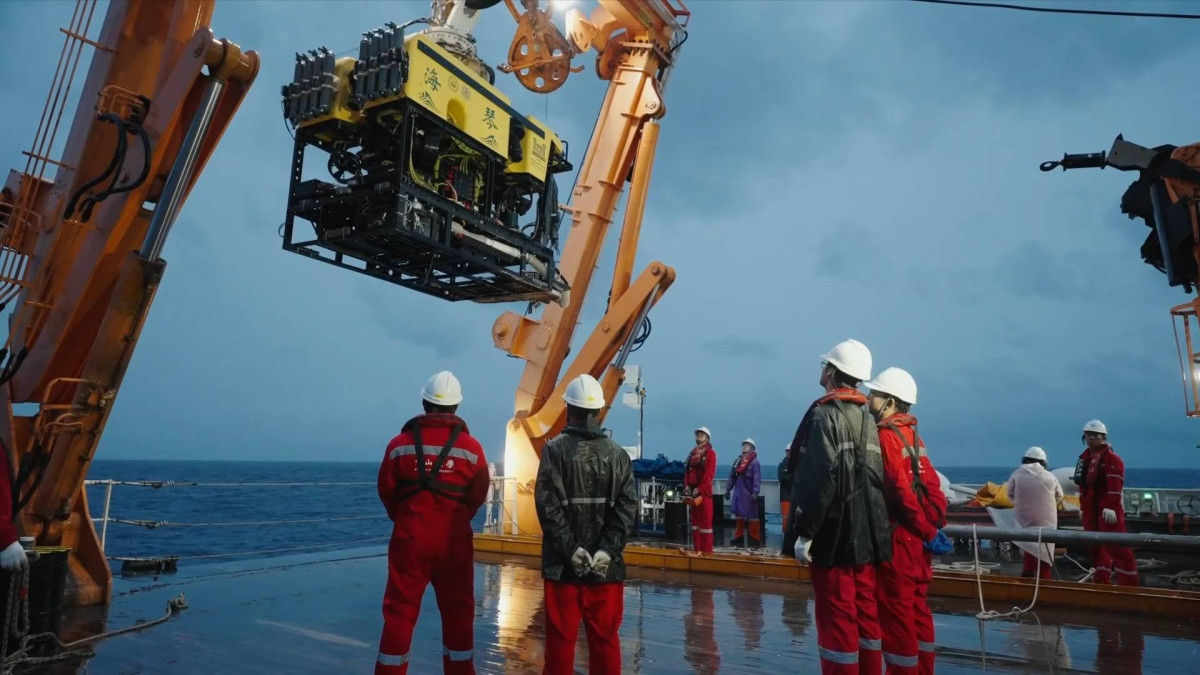Beijing, August 25—
China has achieved a significant milestone in deep-sea exploration as its indigenously developed Remotely Operated Vehicle (ROV) “Haijin” successfully descended to a depth of 4,140 meters in the South China Sea during a sea trial conducted on Saturday morning. The mission highlights China’s growing technological prowess in marine research and underlines its strategic ambitions in deep-sea resource exploration.
A Homegrown Technological Marvel
Developed by Shanghai Jiao Tong University, the “Haijin” deep-sea electric ROV is designed for operations at depths of up to 6,000 meters. It is equipped with:
- High-resolution 4K cameras for real-time imaging of deep-sea environments
- Multi-jointed robotic arms for collecting biological, mineral, and sediment samples
- Advanced sonar navigation systems for precise mapping of the seabed
- Integrated environmental sensors to monitor temperature, salinity, and pressure
- Automated directional control and precise hovering capabilities, enabling stability in extreme underwater conditions
Weighing 3.6 tons, the ROV is powered by a high-performance electric propulsion system optimized for deep-sea maneuverability and energy efficiency.
Successful Sample Collection and Data Transmission
During the mission, “Haijin” successfully collected multiple biological samples, including rare deep-sea organisms, sediments, and water specimens. These were safely delivered to the surface and transferred to the research vessel “Zhong Shan Da Xue” for detailed analysis. The mission also tested “Haijin’s” real-time data transmission system, which provided continuous updates to surface scientists regarding environmental conditions, seabed composition, and marine biodiversity.
First-Ever Coordinated Deep-Sea Operation
This trial also marked a historic first for Chinese marine exploration. For the first time, two deep-sea unmanned submersibles — including “Haijin” — conducted simultaneous coordinated scientific operations under a single Chinese research vessel. This advancement enables parallel deep-sea mapping, faster sample collection, and multi-location data acquisition during a single expedition.
Strategic Significance for China
Experts suggest that “Haijin’s” success will play a pivotal role in strengthening China’s marine research capabilities and securing its position in deep-sea resource exploration. The South China Sea is known for its complex undersea ecosystems and rich mineral deposits, making it a strategic zone for scientific study and potential resource utilization.
The mission is part of China’s broader “Blue Ocean Strategy”, which aims to:
- Enhance marine biodiversity research
- Advance deep-sea technology innovation
- Support sustainable resource management
- Strengthen China’s influence in international oceanographic studies
Next Steps and Future Plans
Following the successful trial, researchers plan to conduct further missions to test “Haijin’s” full operational capability at its maximum rated depth of 6,000 meters. These missions will focus on:
- Mapping hydrothermal vents and seafloor mineral deposits
- Studying deep-sea ecosystems and rare marine species
- Supporting China’s national database on marine biodiversity
- Laying the groundwork for future autonomous submersible fleets


